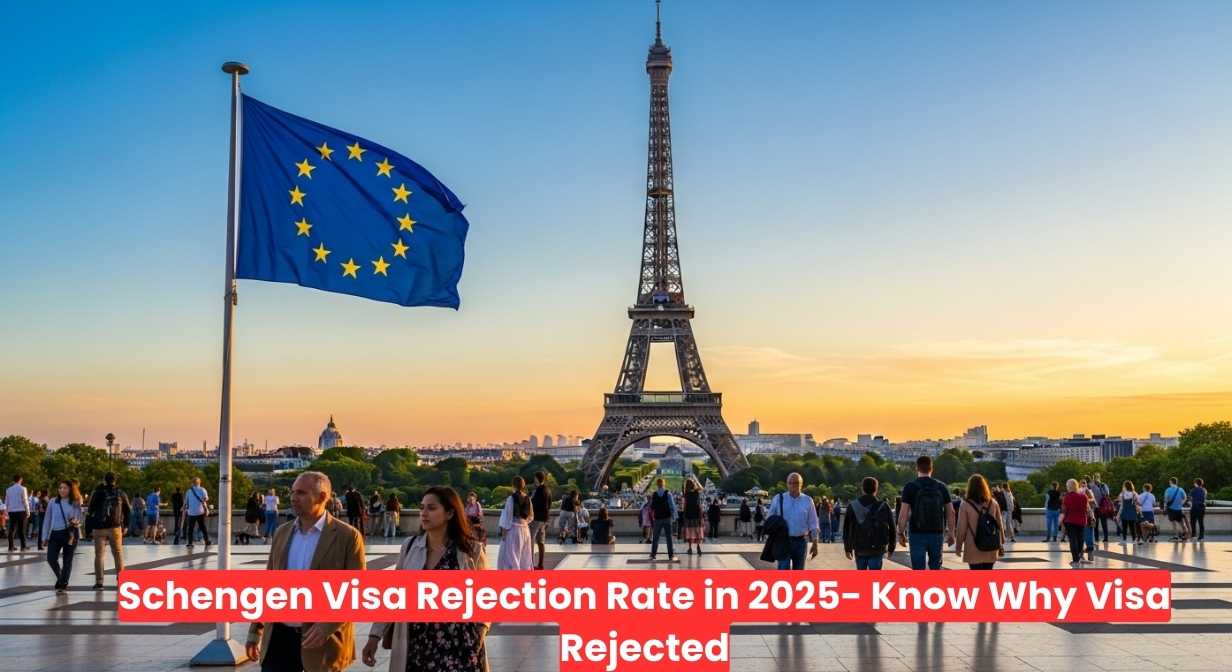A Schengen visa allows you to travel to 29 European countries for up to 90 days, but getting one can be tough due to varying rejection rates. In 2024, Schengen states received 11,716,723 visa applications and rejected 1,706,003, giving an overall rejection rate of 14.56%.
Overview of Rejection Rates
In 2024, the Schengen visa rejection rate dropped slightly from 15.8% in 2023 to 14.56%. However, rejection rates vary by country and applicant nationality. Some countries reject more applications due to high application volumes, strict policies, or concerns about applicants overstaying. Others have lower rejection rates, making them easier for visa approvals.
Countries with the Highest Rejection Rates
Some Schengen countries have stricter visa processes, often due to high application numbers or concerns about immigration. Here are the top five countries with the highest rejection rates in 2023 (latest detailed data available):
- Malta: 37.6% rejection rate. Malta’s small size and strict policies lead to high rejections.
- Estonia: 33.1% rejection rate. Despite fewer applications, Estonia has a rigorous review process.
- Belgium: 26.5% rejection rate. As a hub for diplomacy, Belgium applies strict scrutiny.
- Sweden: 23.1% rejection rate. Sweden’s detailed process results in more rejections.
- Denmark: 21.2% rejection rate. Strict adherence to Schengen rules increases denials.
Other countries with high rejection rates include France (16.6%), Spain (15%), and Germany (14.3%). These countries receive millions of applications (e.g., France: 2.5 million, Germany: 1.5 million), which can lead to stricter checks and higher rejections.
Countries with the Lowest Rejection Rates
Some Schengen countries are more visa-friendly, offering higher approval rates. Here are the top five easiest countries to get a Schengen visa from in 2023 (latest data):
- Iceland: 2.2% rejection rate (97.8% success rate). Iceland’s efficient process and low application volume make it the easiest.
- Switzerland: 10.7% rejection rate. Transparent guidelines and improved processes help approvals.
- Latvia: 11.7% rejection rate. Latvia’s streamlined system supports high approval rates.
- Italy: 12% rejection rate. Despite high application numbers, Italy maintains a fair approval process.
- Luxembourg: 12.7% rejection rate. Luxembourg’s straightforward process aids applicants.
Other visa-friendly countries include Lithuania (12.8%) and Slovakia (under 13%).
Nationalities with High Rejection Rates
Rejection rates also depend on the applicant’s nationality. In 2023, African and South Asian countries faced the highest rejections:
- Comoros: 57% rejection rate.
- Guinea-Bissau: 46% rejection rate.
- Nigeria: 46% rejection rate (111,201 applications, 46% rejected, costing $5 million in fees).
- Pakistan: 48.2% rejection rate.
- Algeria: 45.8% rejection rate (272,894 rejections).
For Indian applicants, 1 in 6 applications (about 16.7%) was rejected in 2024, with 936,748 approved. Applicants from wealthier countries like the US, Canada, or the UK face much lower rejection rates (e.g., 1 in 25 for US applicants).
Why Are Visas Rejected?
Common reasons for Schengen visa rejections include:
- Incomplete Documents: Missing or incorrect papers, like passports not valid for 3 months beyond your trip or lacking two blank pages.
- Insufficient Funds: You need about €100–120 per day (e.g., €3,000–3,600 for 30 days). Some countries, like Poland, require a minimum bank balance (75 PLN per day).
- Unclear Purpose of Travel: Not explaining why you’re visiting or providing a vague itinerary.
- No Proof of Ties to Home Country: Lack of evidence (e.g., job contract, property, or family) showing you’ll return home.
- Inadequate Travel Insurance: Insurance must cover €30,000 for medical emergencies.
- Past Visa Issues: Overstaying or a criminal record can lead to rejection.
Tips to Avoid Rejection
To boost your chances of approval, follow these steps:
- Apply Early: Start 2–3 months before your trip to allow time for processing or appeals.
- Choose the Right Country: Apply to the country where you’ll spend the most time or enter first. For easier approval, consider Iceland, Switzerland, or Latvia.
- Complete Documents: Ensure your passport is valid, include bank statements (showing €100–120/day for 28 days), travel insurance, flight bookings, and accommodation proof.
- Show Strong Ties: Provide a job letter, property documents, or family details to prove you’ll return.
- Be Honest: Fill out forms accurately and avoid fake documents.
- Get Help: Use visa agencies or check embassy websites for guidance.
Financial Impact of Rejections
Rejected applications cost applicants €136,480,240 in non-refundable fees in 2024, with France earning €245,818,240 from applications. For example, Nigerian applicants lost $5 million, and Indian applicants lost Rs 116 crore in 2024. Additional losses come from non-refundable flights or hotel bookings.
Why the Differences?
Countries like Malta and Estonia reject more due to strict policies or concerns about overstaying, while Iceland and Switzerland have efficient, transparent systems. Applicants from poorer countries face higher scrutiny due to lower passport power and economic conditions, especially in Africa and South Asia.

